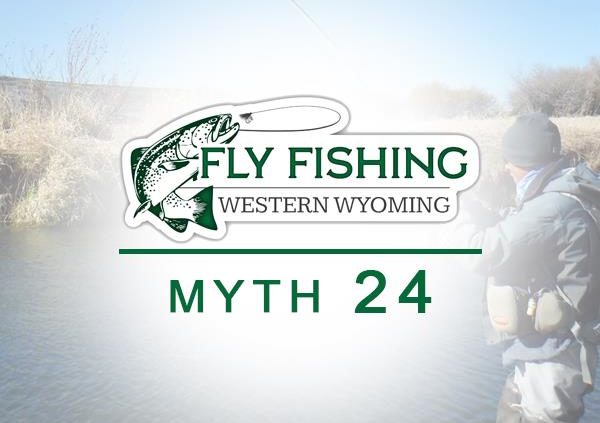Nymph Leader
Nymph Leader
“From your indicator to your flies, your nymph leader should be 1½ to 2 times the depth of the water.” This is a topic I continually discuss with my clients.
Let’s first discuss where this myth originated. Most nymph fishing has been done upstream. When your leader and flies hit upstream of your indicator, here is what happens:
- Your indicator is moving much faster than your sunken flies and weight. (The surface of the water is faster than the layers of water subsurface.)
- As a result of #1 above, Your indicator is pulling your leader system downstream. As this happens, the water is actually lifting your leader.
- As a result of #1 and #2 above, you need lots of weight and/or a very long leader to “get down”.
- On any rivers with “soft”, clear water and spooky fish, the line, leader and indicator travel over the fish long before the flies. Not a good idea!
These facts explain why I teach my clients how to present a nymph downstream.
This is how we do it:
From an upstream position, we cast across the river, much farther out than the fish is. As an example, let’s say you are on river left and the fish is 20’ off your bank and 30’ below you. We would cast 50’ out into the river at a more or less right angle to the bank. We then pull the fly back to 20’ off our bank by lifting our rod tip to a vertical position. As the fly moves into position directly upstream from the fish, we flip our indicator upstream of the flies and lower our rod and throw a bunch of slack behind the indicator.
If the fish is in 3’ of water, even in a very fast current, our flies will sink rapidly because there is no surface drag by the indicator. It will end up almost directly above the flies by the time it reaches the fish. By using this method, we will use a very small amount of weight and only 3’ from the fly to the indicator. Even the most subtle strike will be immediately transferred to the indicator. Simply lift gently and you are on.
A further advantage of this type of presentation is that the use of soft hackle and wet flies is perfectly adapted to this method. Say the fish is 32’ downstream. When our indicator is 29’ downstream, we simply stop the fly line. When this happens, the fly, down 3’, begins to rise in front of the fish. This is a great way to imitate caddis and some fast moving mayfly bugs. (This technique is really old and very effective. It is referred to as the Leisenring Lift, named after its inventor, and is best achieved from an upstream position.
The way we set the hook in this situation is to keep our rod tip a few feet off the water. When we feel the take, we actually drop the rod a few feet! Then we gently lift – that is, unless the fish is tearing away, setting the hook themselves. When fishing with this method you need a soft tip and a delicate set or you’ll break off a ton of fish. I had an angler a few years ago break off 13 in a row! That is a record I hope is never again approached!
Next month we’ll talk about the Myth regarding Wind knots.
By the way, I have hired a videographer to come to the Hams Fork next summer and video all the techniques discussed in these myths. By September 2018, all of them should be up on YouTube. Also, I’ve had a number of people who wanted further explanation of why a long rod is inefficient when compared to a short rod when fighting fish. Here it is:
As for the longer rod, think if it as a push broom. Pick it up by the end of the handle and try to hold it straight out. Can’t do it unless you are Godzilla. Think of the head of the broom as your fish. It is far away. You have no real power out there. Same with a long rod. Look at deep water fishing rods for grouper and halibut. They are short. The best possible, and most efficient way to fight a fish would be with no rod at all! Another way to think of it is to take a 10′ rod and tie your leader to a 10lb weight 40′ away. Keeping your rod at vertical, see if you can pull the weight. Very difficult. If the same weight rod is 4′ long, it would be easier.




Leave a Reply
Want to join the discussion?Feel free to contribute!